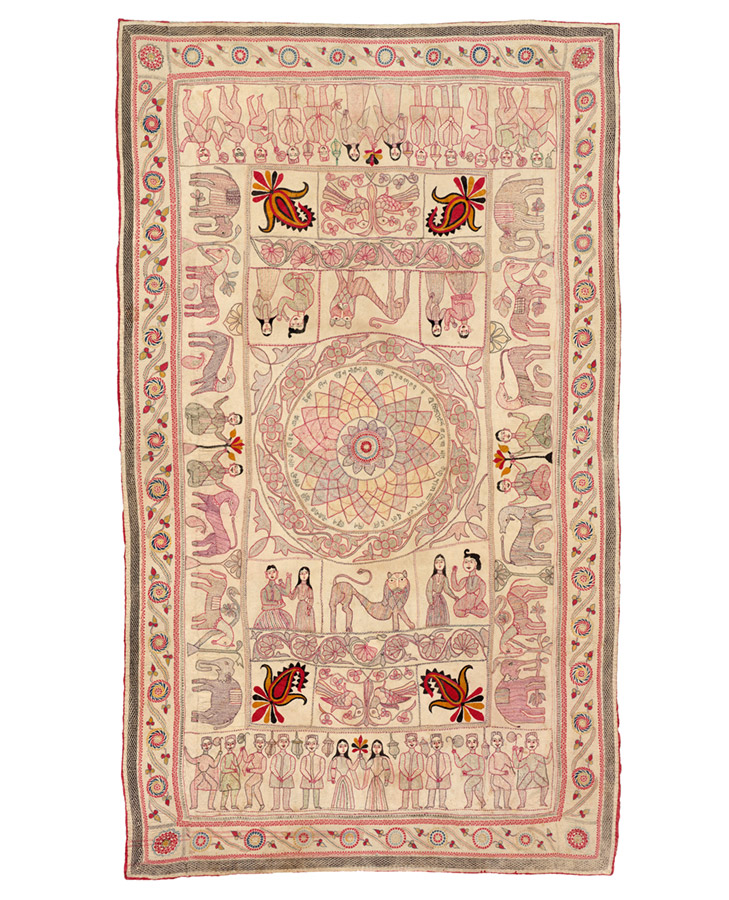Embroidered Dreams: A Personal Appreciation of Bengali Kanthas
- click on the image to enlarge | click on the Expand icon upper left to enlarge further
click Esc to close and return to this page
PLATE 33
Early twentieth century
Cotton plain weave; hand-sewn, quilted, and embroidered with cotton thread
74 in. x 43 5 / 16 in. (188 cm x 110 cm)
Mingei International Museum, Gift of Courtenay C. McGowen, 2013-33-010
A large 100-petal lotus forms the central mandala of this sujni kantha, surrounded by an
inscription and rows of human and animal figures. The sheer number of figures in this kantha
makes it unusual. Four boteh, or paisley motifs, point in from the corners of the central rectangle, all in richer tones than the rest of the kantha. The piece is quilted overall and worked in red, blue, black, yellow, and green thread, the variety of colors indicating an early twentieth-century date. Well drawn and executed, this kantha has been backed with plain cotton fabric, probably at a later date.
Notes:
The inscription is written in Bengali characters around the lotus flower along the narrow inner border. The language, however, may be in a regional dialect, which I have been unable to decipher to my satisfaction. Here is a gist of what information I have garnered.
Inscription in obscure Bengali dialect:
The name of the person seems to be given as “shri bibadya sundare debya” which perhaps should be amended to “bidyasundari devi,” possibly the owner of the kantha. More importantly, there is a clearly written date in the Bengali era-1312–which corresponds to 1906 CE; hence, the kantha is 111 years old. It was made in Raipada (the enclave of the Rais), which may be a village or neighborhood of the Rai clan.
